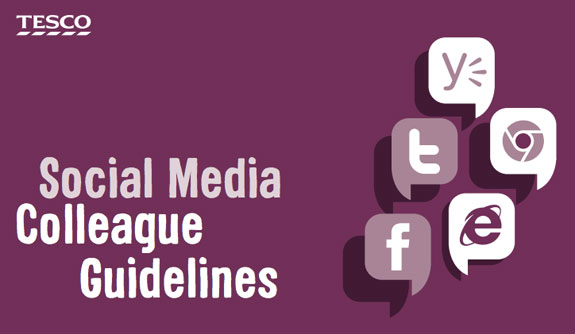 Do you have a social media strategy, policy, or a content schedule in a file on your desktop, unopened for the past 6 months? Or perhaps you’re slightly more old-fashioned, and they’re in a draw by your desk, gathering dust?
Do you have a social media strategy, policy, or a content schedule in a file on your desktop, unopened for the past 6 months? Or perhaps you’re slightly more old-fashioned, and they’re in a draw by your desk, gathering dust?
If so, you’re not alone. Companies everywhere do all the necessary groundwork for a terrific social media programme, thinking about all the right issues, creating all the right policies – and then, within weeks of their programmes being launched, promptly forget about them.
Later, they can’t figure out why they’ve lost focus, why their plan isn’t working and why they threw so much money down the drain.
Let’s face it – these documents are, all too often, heavy, technical and not particularly user-friendly. So how do you create social media plans (or for that matter, any type of document) that your team actually reads, internalises and uses?
Here are some good strategies. We’d love to hear your own ideas in the comments!
1) Keep it short
The shorter your policy, the more likely that staff will read it and refer to it in the future. Once you’ve written it – as concisely as possible – set yourself the challenge of trimming it by at least 25%. It’s always possible!
Here’s a great example of Tesco’s social media guidelines for its staff. The whole document is just two pages long, and is also notable for its friendly, straightforward tone, with no jargon.
2) Include a one-page summary up front
All the most crucial information should be presented in an easy-to-digest format at the beginning of your strategy, for ease of reference and so that staff simply have no excuse for not reading at least that part.
In a social media policy, for example, this should include absolute no-no’s, as well as the most important guidelines. Consider producing a table, one side showing ‘Do it like this’ and the other side showing, ‘Don’t do that.’
A social media strategy might include a summary of which groups are to be targeted on each platform.
One-page summaries can also be excerpted and posted by a desk, where they can easily be seen, rather than forgotten in a desk.
An interesting example is this social media policy from Translink. Most of the document is serious and formal, but at the end it has a two-page Q&A for staff, highlighting the most important issues that are likely to crop up in much more accessible language. Let’s just hope staff find it at the end!
3) Use colour-coding
Another way to highlight important information, making it more likely that it will be noticed, and read.
In a social media policy, for example, you might like to highlight absolute no-no’s red, and good practise green. In a social media schedule you can colour-code deadlines or responsibilities so that they stand out.
4) Create a visual representation
People learn in different ways: some like reading, others learn visually. If your social media strategy is particularly long and complex, it helps to represent the main information differently, as an image.
You could create an infographic, or use a mind-map – here’s an example from communityorganizer20.com.
There is some great mind-mapping software available online, for example from MindGenius, which we have had a good experience with, and many free tools to create infographics.
Like the one-page summaries, these can also be stuck to a wall as a constant reminder and reference.
5) Digital copy + hard copy
Again, people have different preferences and for something like a social media strategy or timetable, it’s best to cater for both.
But there is an added reason why everyone should have a digital copy: It’s easy to search, and therefore reach the information you need more quickly – making it user-friendly.
6) Accountability
Ultimately, the best way to make sure that your team frequently refers to their social media strategy, policy and schedule is to check the performance of your programme against these documents.
Your social media strategy, for example, should include dates when the entire social media campaign is reviewed. During that process, it is crucial to refer back to the strategy document and check that all the steps outlined were actually carried out.
Similarly, whoever is in charge of your social media programme needs to check periodically that your schedule is adhered to.
A month or two after they are produced, it might be helpful to schedule a staff meeting to discuss how the policies and schedule are working out in practise. This will create the expectation that they are actually going to be used, and help you adjust them so that they are genuinely useful – which is, of course, the best guarantee of all that they will actually be used.
How do you make sure that your social media guidelines, strategy and schedule are actually used? Share your advice in the comment section!








